Sketchbooks are windows into an artist’s creative soul…
…offering a raw and intimate glimpse of their artistic process. In this list, we celebrate the “Top 10 Famous Sketchbook Artists” who have left an indelible mark on the art world through their prolific and inspiring sketchbooks. Throughout history, countless renowned artists have filled pages with sketches that capture fleeting ideas, explore techniques, and experiment with styles. From detailed studies to expressive doodles, these artists remind us of the beauty and power of keeping a sketchbook.
Leonardo da Vinci
Leonardo da Vinci’s sketchbooks stand as a testament to his boundless curiosity and mastery across multiple disciplines. These notebooks, filled with intricate anatomical studies, visionary inventions, and meticulous observations of nature, showcase his dedication to understanding the world through art and science.
The Anatomy of a Genius
Da Vinci’s anatomical sketches remain some of the most detailed and accurate of their time. His studies of muscles, bones, organs, and human movement not only contributed to medical knowledge but also refined his artistic precision. He dissected cadavers to document the body’s internal structures, producing drawings that were centuries ahead of their time in terms of scientific accuracy.
Sketchbooks.org | VISUAL RESEARCH HUB
Leonardo da Vinci Sketch Examples
Visual research is critical for any creative endeavor. We have compiled specialized links to lead you directly to images, videos, and inspiration for "Leonardo da Vinci Sketch Examples" across the web's best visual search platforms.
Inventive Concepts & Futuristic Designs
Beyond anatomy, da Vinci envisioned flying machines, water systems, and war devices, many of which foreshadowed modern engineering. His Ornithopter, inspired by birds, attempted to solve human flight centuries before airplanes existed. His designs for tank-like armored vehicles, automated machines, and hydraulic engineering projects revealed his remarkable ability to bridge imagination with practicality.

Nature & the Flow of Motion
Da Vinci’s fascination with nature extended to botanical studies, flowing water dynamics, and cloud formations. He meticulously captured how water moved, creating sketches that analyzed turbulence, whirlpools, and waves—insights that later influenced fluid mechanics. His plant studies, drawn with delicate precision, highlight the same observational care found in his portraits.
Legacy of the Sketchbooks
Leonardo’s notebooks, including the Codex Atlanticus and Codex Leicester, continue to be studied for their scientific and artistic contributions. His approach—merging empirical research with imaginative artistry—remains a cornerstone of creative thought.
His sketchbooks were not just art—they were blueprints for understanding the universe. Through his detailed studies, da Vinci captured the essence of creativity and logic intertwined, leaving a legacy that still inspires modern scientists, engineers, and artists today.
Vincent van Gogh
Vincent van Gogh’s sketchbooks are a window into his artistic process, revealing raw emotion, expressive lines, and deeply personal interpretations of the world around him. His drawings captured the essence of landscapes, portraits, and daily life, serving both as preparatory studies and standalone works filled with movement and intensity.
The Expressive Power of Linework
Unlike the meticulous precision of traditional academic sketches, van Gogh’s drawings were bold, spontaneous, and charged with energy. He often used quick strokes, hatch marks, and exaggerated contours to convey movement and feeling rather than technical perfection. His figures and landscapes emerged not from strict realism but from a heightened emotional response to his surroundings.
Studies of Nature & Rural Life
Van Gogh’s sketchbooks include expressive depictions of wheat fields, windmills, and farmworkers, subjects that later became iconic in his paintings. His affinity for rural landscapes is evident in drawings where rolling fields are sketched in rhythmic, undulating lines. His studies of peasant life reflect both admiration and sorrow, showing figures engaged in daily labor with stooped postures and textured clothing that hint at struggle and perseverance.

Portraits & Character Studies
Faces fascinated van Gogh, and his sketchbooks contain intense studies of people, often marked by exaggerated features that reflected deeper emotion. His portrait sketches, especially those of miners, farmers, and his close acquaintances, show an immediacy that goes beyond mere likeness—his lines emphasized the subject’s inner world.
Preparatory Sketches for Iconic Paintings
Many of van Gogh’s paintings, such as The Potato Eaters and Starry Night, were preceded by rough sketches capturing initial compositions and forms. His sketchbooks reveal early versions of swirling skies, contorted trees, and intimate interiors, giving insight into his evolving vision before color was applied. His letter sketches, often sent to his brother Theo, functioned as miniature previews of paintings, offering descriptions and early compositional ideas.
Legacy of Van Gogh’s Sketchbooks
Today, van Gogh’s sketchbooks are invaluable not only as historical documents but as expressions of a restless, searching mind. They show the intensity of his artistic process, the emotional depth behind his work, and his relentless pursuit of capturing human experience. His raw, gestural sketches remind us that drawing is not merely about technique—it’s about feeling, movement, and personal truth.
Frida Kahlo
Frida Kahlo’s sketchbooks and diaries are intimate, visually rich reflections of her pain, resilience, and artistic vision. Filled with personal musings, surreal sketches, and bursts of vivid color, they serve as a deeply autobiographical exploration of identity, culture, and emotion.
Art as Self-Expression
Unlike traditional preparatory sketchbooks, Kahlo’s pages were deeply personal, functioning as both journal entries and artistic studies. She used them to process her thoughts, explore her Mexican heritage, and depict emotions that transcended words. Her sketches often featured symbolic motifs, such as monkeys, skeletons, and hearts, each carrying unique meaning within her work.
Bold Colors & Emotional Imagery
Kahlo’s notebooks are striking for their vibrant pigments, which echo the intensity of her paintings. Splashes of deep reds, fiery oranges, and rich greens bleed across her pages, reinforcing themes of passion, suffering, and survival. She often combined text with drawings, layering poetry and reflection beside expressive faces and surreal symbols.

Self-Portraits & Pain Studies
Her diaries include sketches analyzing her own body and its transformation due to ongoing health struggles. After enduring numerous surgeries and prolonged physical suffering, Kahlo’s art became a way to reclaim control. Some pages depict her spine as a cracked column, while others show her in traditional Mexican attire, reinforcing her connection to her roots.
Political & Cultural Themes
Kahlo’s sketchbooks also reflect her strong political beliefs, featuring imagery related to Mexican identity, revolution, and resistance. She was deeply influenced by folk traditions, and many pages blend pre-Columbian symbols with modern surrealism, merging past and present in a distinctive visual language.
Legacy of Her Sketchbooks
Kahlo’s notebooks remain a powerful source of insight into her emotional depth and artistic process, offering a raw, unfiltered glimpse into her inner world. They remind us that sketchbooks can be more than studies—they can be diaries, declarations, and artistic confessions that speak beyond words.
J.M.W. Turner
J.M.W. Turner’s sketchbooks are a masterclass in light, movement, and atmosphere, capturing the raw energy of landscapes and seascapes with breathtaking immediacy. His watercolor studies and pencil sketches—often created during his extensive travels—highlight his keen observational skills and innovative approach to composition.
Capturing the Essence of Light & Atmosphere
Turner was fascinated by the shifting qualities of light, often sketching landscapes at different times of day to study how sunrises, storms, and mist altered the scenery. His use of watercolor washes and delicate pencil strokes allowed him to create a sense of movement, depth, and fleeting moments in nature.
Travel Sketchbooks & On-the-Spot Studies
Turner carried hundreds of sketchbooks throughout Europe, using them to document the architecture, coastlines, and cityscapes he encountered. His Italian and Swiss landscapes showcase his ability to translate majestic natural beauty into evocative compositions. Many of his quick pencil sketches served as the foundation for later paintings, demonstrating his process of refining an idea from initial study to full-scale artwork.

Maritime & Weather Observations
The sea was a constant inspiration for Turner. His stormy seascapes, turbulent waves, and dramatic skies reflect his deep understanding of natural forces. He often sketched shipwrecks, harbors, and coastal views, analyzing how weather shaped the environment and adding emotional weight to his compositions.
Legacy of Turner’s Sketchbooks
Turner’s notebooks remain a treasure trove of artistic innovation, showcasing his daring use of color, expressive brushwork, and ability to turn observation into masterful compositions. His sketches offer a rare glimpse into the mind of a painter who saw the world not just as it was, but as it felt—alive, ever-changing, and full of drama.
Eugène Delacroix
Eugène Delacroix’s sketchbooks are a vivid chronicle of his travels, filled with expressive studies that capture the richness of Moroccan culture, architecture, and landscapes. His notebooks provide an intimate glimpse into his artistic curiosity, blending bold compositions, dynamic figures, and immersive scenery with the detailed observations of a true visual storyteller.
Moroccan Sketches: A Window into Culture
In 1832, Delacroix embarked on a journey to Morocco, Algeria, and Spain, where he meticulously documented the customs, clothing, and everyday life of the people he encountered. His sketches reveal an intense fascination with Moroccan ceremonial events, richly embroidered fabrics, and the interplay of light within architectural structures. Unlike staged compositions, these drawings were on-the-spot studies, capturing the spontaneity and elegance of daily interactions.
Architectural & Landscape Studies
Delacroix’s Moroccan sketchbooks showcase detailed drawings of mosques, palaces, courtyards, and street scenes, illustrating how shadow and light shaped the environment. His studies of colorful markets, lush gardens, and expansive desert landscapes reflect his ability to translate atmospheric beauty into dynamic compositions. Many of these observations later inspired the vibrant color palettes and structural depth of his larger paintings.

Figures & Costumes: A Study of Motion
His fascination with Moroccan attire is evident in sketches portraying flowing robes, turbans, and intricately patterned garments. These studies emphasize the movement and posture of figures, allowing Delacroix to refine his approach to gestural expression. He often sketched horsemen, musicians, and dancers, capturing their energy through fluid lines and dramatic contrasts.
Legacy of Delacroix’s Travel Sketchbooks
Delacroix’s Moroccan studies became a foundation for his later works, influencing his compositional techniques, color theory, and portrayal of light. His notebooks remain an invaluable record of historical and cultural observation, demonstrating how travel can profoundly shape an artist’s vision. Through his sketchbooks, Delacroix transported viewers beyond the canvas—offering them a direct glimpse into the vibrant world he experienced.
Paul Cézanne
Paul Cézanne’s sketchbooks reveal his relentless pursuit of form, structure, and composition, serving as preparatory studies for his groundbreaking still lifes and landscapes. His drawings were not merely practice exercises but essential explorations of perspective, spatial depth, and color relationships, laying the foundation for modern art movements like Cubism.
The Building Blocks of Still Life
Cézanne’s sketchbooks contain numerous studies of fruit, bottles, and table settings, each meticulously examined for its geometric properties. Unlike traditional realism, he emphasized the underlying forms—cylinders, spheres, and cones—that made up objects in his compositions. These preparatory sketches allowed him to refine spatial relationships and create a structured harmony within his paintings.
Landscape Studies & Perspective Experiments
His landscapes were deeply rooted in observation, with sketches exploring the tilt of hills, shifts in horizon lines, and the interplay of light across natural forms. Cézanne broke away from classical perspective, often sketching views with multiple vantage points. This unconventional approach introduced a dynamic sense of movement, later influencing artists such as Picasso and Braque.

Gesture & Contour: The Evolution of His Technique
Cézanne’s sketchbooks also include loose, expressive studies of trees, mountain ranges, and figures, showing his evolving approach to contour and shading. His linework was deliberate yet fluid, often layering multiple iterations of the same object to refine its presence within space.
Legacy of Cézanne’s Sketchbooks
These preparatory drawings offer insight into how Cézanne systematically built his compositions, shaping his vision one sketch at a time. His willingness to deconstruct objects into their essential forms revolutionized the way artists approached structure and depth, earning him the title of “the father of modern art.”
William Blake
William Blake’s sketchbooks were more than artistic studies—they were a fusion of poetry, symbolism, and visionary art, reflecting his deeply spiritual and imaginative worldview. His intricate drawings, often accompanied by lyrical verses, bridged the gap between visual storytelling and literary expression, making his notebooks a unique testament to creativity beyond conventional boundaries.
Poetry & Art: A Seamless Integration
Blake believed that words and images were inseparable, and his sketchbooks reflect this philosophy. He often illustrated his own poetic works, intertwining handwritten text with elaborate, otherworldly compositions. His illuminated manuscripts, such as Songs of Innocence and Experience, exemplify how text and imagery can merge into a singular artistic experience.
Symbolic & Visionary Drawings
His sketches were deeply symbolic, often depicting spiritual beings, biblical themes, and mythological figures. His notebooks contain studies of angels, demons, celestial visions, and allegorical scenes, serving as preparatory drawings for his larger engravings and illuminated books. His art was driven by personal mysticism, presenting alternate realities that defied artistic conventions of his time.

Portraits & Anatomical Studies
Blake was also an accomplished figure artist, and his sketchbooks include expressive portraits, anatomical studies, and dynamic compositions that demonstrate his keen observational skills. Unlike academic realism, his figures often carried exaggerated features and dramatic postures, intensifying their emotional impact.
Legacy of Blake’s Sketchbooks
Blake’s notebooks remain a testament to unbound creativity, merging art and literature in a way few others have attempted. His work continues to inspire poets, artists, and philosophers, proving that true artistic expression knows no limits—whether through words, images, or the interplay between them.
Pablo Picasso
Pablo Picasso’s sketchbooks offer an intimate look into the mind of one of history’s most revolutionary artists, revealing his relentless experimentation with form, style, and artistic concepts. From early classical studies to the abstract deconstructions of Cubism, his notebooks showcase his evolving techniques and groundbreaking approaches to visual representation.
The Early Years: Academic Precision & Classical Studies
Picasso’s earliest sketches demonstrate his technical mastery, featuring highly detailed anatomical studies, expressive figure drawings, and architectural compositions. His classical training provided a foundation that later allowed him to challenge artistic norms with confidence.
Cubist Experiments: Breaking Form & Perspective
As Picasso pioneered Cubism, his sketchbooks became laboratories for fragmented perspectives, geometric abstraction, and multi-viewpoint compositions. His drawings dissected objects and figures into essential shapes—creating works that challenged traditional spatial representation. These notebooks include preparatory studies for his most famous Cubist paintings, including Les Demoiselles d’Avignon.

Surrealism & Symbolism in Sketches
Picasso’s later notebooks reflect his engagement with Surrealism, featuring distorted forms and dreamlike sequences. His sketches explore symbolic imagery, mythological references, and exaggerated human expressions, blurring the lines between reality and imagination.
Legacy of Picasso’s Sketchbooks
Picasso’s notebooks remain a testament to his endless curiosity, adaptability, and artistic innovation. His ability to continuously reinvent his style, deconstruct traditional forms, and experiment with composition set him apart as one of the most prolific artists of all time. These sketches reveal that art is a journey of exploration, where boundaries are meant to be challenged and redefined.
Jean-Michel Basquiat
Jean-Michel Basquiat’s sketchbooks are a direct extension of his raw, unfiltered creativity, blending explosive imagery with fragmented text, symbols, and frenetic mark-making. His pages reveal an artistic mind constantly in motion, shaping ideas through rapid strokes and layered meanings that challenge convention.
A Fusion of Text & Imagery
Basquiat’s sketchbooks were more than visual studies—they were dialogues with himself, featuring hand-scrawled phrases, repeated words, and cryptic poetry alongside expressive figures. He merged words with drawings to create multidimensional storytelling, often reflecting themes of race, power, identity, and history.
Symbolism & Social Commentary
Throughout his sketches, Basquiat employed recurring symbols—crowns, skulls, anatomical figures, and graffiti-style lettering—to explore narratives of resilience, cultural heritage, and the complexities of fame. His use of bold lines, crossed-out text, and spontaneous color application reinforced the raw energy and urgency behind his work.

Figures & Expression in Motion
His sketchbooks are populated with intensely stylized portraits, distorted figures, and abstract anatomical studies, showing his fascination with both human form and psychological depth. Faces often appear fragmented, exaggerated, or outlined with striking contrast, emphasizing themes of struggle, empowerment, and dissonance.
Legacy of Basquiat’s Sketchbooks
Basquiat’s notebooks remain a testament to his unique artistic voice, offering a glimpse into the thought process behind his electrifying compositions. They reflect an artist who broke barriers, redefined contemporary art, and used his sketches as a space for unfiltered expression. His work continues to inspire generations, proving that art can exist beyond polished presentation—it can be immediate, chaotic, and deeply personal.
Albrecht Dürer
Albrecht Dürer’s sketchbooks are a masterclass in precision and observation, showcasing his deep understanding of nature, human anatomy, and intricate detail work. His drawings embody the Renaissance pursuit of knowledge, blending artistic beauty with scientific accuracy.
The Science of Anatomy & Human Form
Dürer was one of the first artists to apply mathematical principles to human proportions, creating detailed studies that examined the structure of muscles, bones, and facial features. His Four Books on Human Proportion systematically analyzed the idealized human body, influencing generations of artists. These anatomical sketches weren’t just artistic—they were groundbreaking studies in understanding form.
Nature & Animal Studies: A Lifetime of Observation
Dürer’s fascination with the natural world is evident in his delicate renderings of plants, animals, and landscapes. His famous Young Hare and Great Piece of Turf showcase his ability to capture minute textures, fur patterns, and botanical details with remarkable accuracy. His observations extended to wildlife, often sketching exotic creatures based on descriptions from travelers.

Mathematical & Geometric Precision
As a true Renaissance thinker, Dürer’s notebooks contain studies of perspective, geometry, and architectural forms. He meticulously explored symmetry, foreshortening, and complex spatial relationships, proving that art and mathematics are deeply interconnected. His technical sketches of castle structures, cityscapes, and decorative engravings reveal his analytical approach to composition.
Legacy of Dürer’s Sketchbooks
Dürer’s sketches remain among the most precise and studied works in art history, demonstrating that observation and technical mastery go hand in hand. His ability to infuse scientific inquiry into artistic expression solidified his reputation as a visionary, bridging the worlds of art, nature, and mathematics.

Sketchbooks.org | SKETCHBOOK KINDS
How Urban Sketchers and Travel Enthusiasts Use Sketchbooks
Picture this: you’re wandering through a vibrant city or soaking in the beauty of an exotic destination. How do you capture that moment? Sure, snapping a quick photo with your phone is easy, but there’s...
Final Thoughts
Sketchbooks are more than collections of sketches—they are windows into creativity, experimentation, and artistic evolution. Each of these artists used their sketchbooks to refine techniques, document ideas, and explore concepts that shaped their masterpieces. Whether through precise anatomical studies, visionary symbolism, or raw emotional expression, their pages reveal the process behind their genius.
Their works continue to inspire modern artists, designers, and thinkers, showing that creativity thrives in observation, practice, and fearless exploration. Whether you’re an artist filling your own sketchbook or simply fascinated by these visual journeys, the influence of these masters remains undeniable.
Ready to Share Your Work?
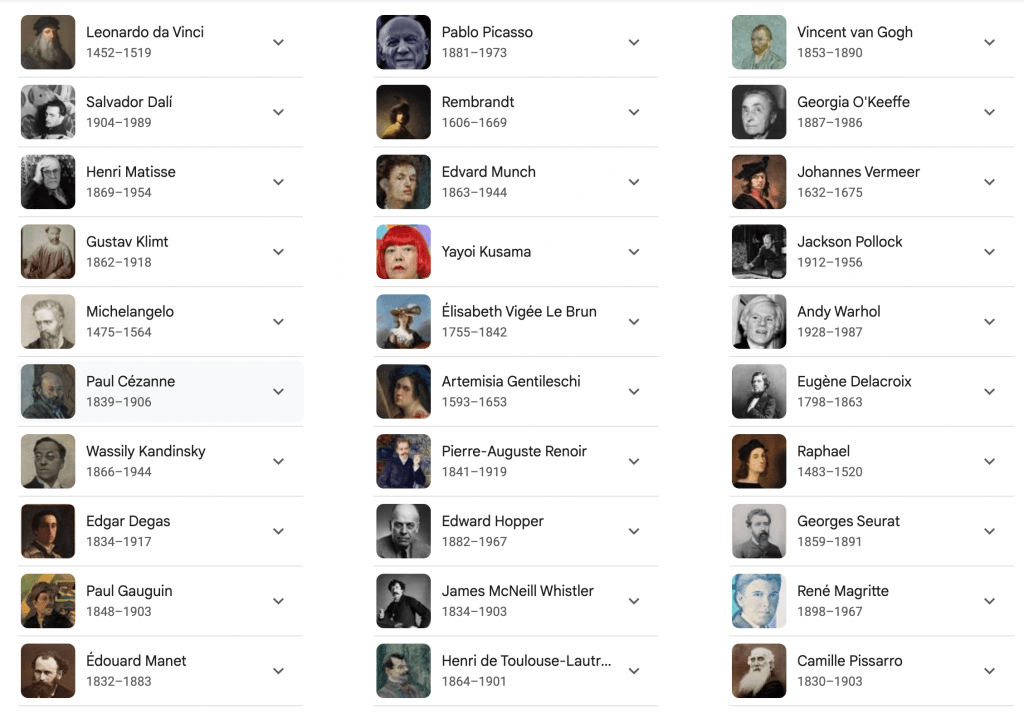

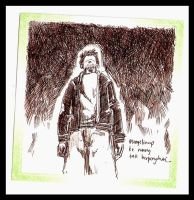

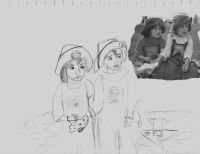
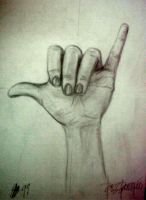
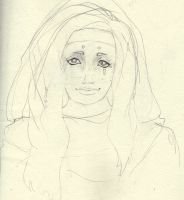

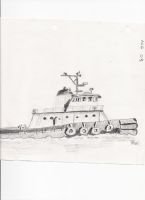

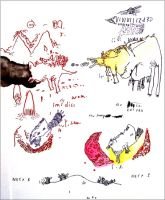

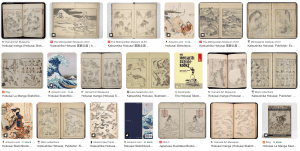
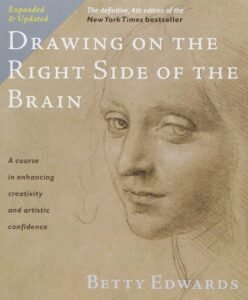
Legends
Respect!